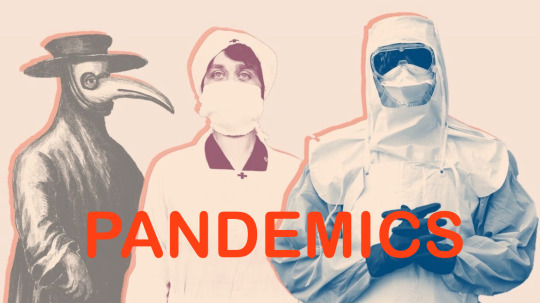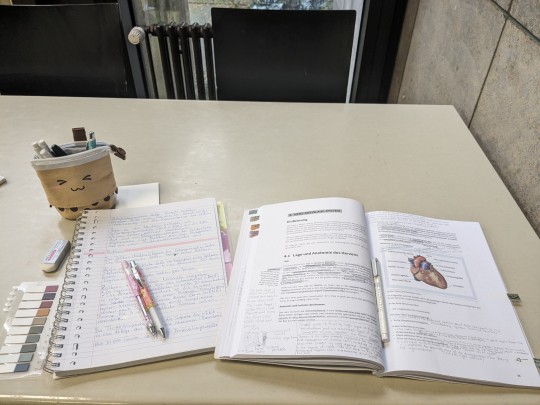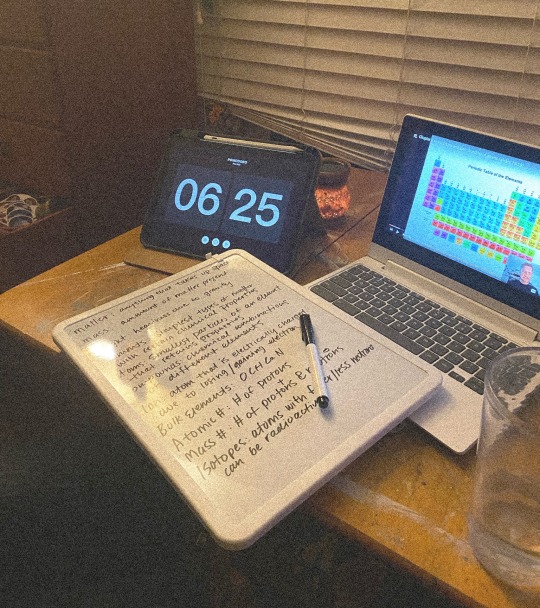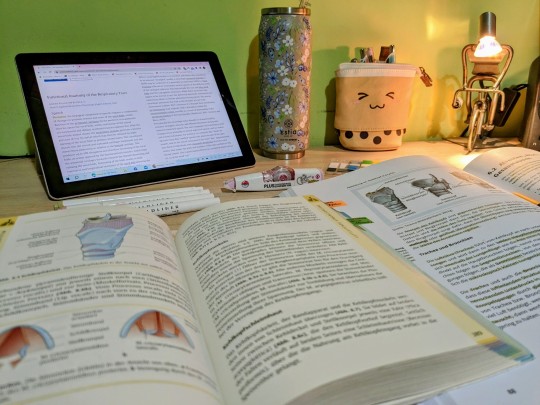#physicians assistants
Explore tagged Tumblr posts
Text
My jaw has been bothering me for over a month. Can’t yawn or breathe deeply without pain. Sometimes I can’t eat in the mornings until the Tylenol has kicked in. I’ve been to 3 different dentists, including a fancy specialist that of course wasn’t covered by my insurance. I went to my primary when my ear stared hurting too, went to an ears nose and throat doctor that just hadddd to be a referral and took weeks to get just for that to be a dead end. The pain increased to the point that I wanted to stab my ear to make it quit. I was at my lowest point and decided fuck it, let’s go to an urgent care because god knows I’ve done everything else outside of going to an emergency room. I was told they only had PAs available due to short staffing which had me a little worried, not going to lie.
The very sweet lady that couldn’t have been more than 25 and was severely overworked said with very wide eyes, “I know this is going to sound crazy, but I believe it’s a swollen sinus.”
As someone that has no allergies, not even seasonal ones, and doesn’t even have a stuffy nose, I was pretty skeptical. She said the swollen sinus is putting pressure on my jaw which is in turn putting pressure on my ear and they are all linked.
However, she prescribed me medicine, something none of the other doctors did. And wouldn’t you know it, my jaw is no longer hurting and my ear pain is barely noticeable and it’s only been 24 hours.
The 3 hour urgent care visit was worth it.
#way to go overworked PAs#you’re killing it#catching things doctors are missing#like damn#how many doctors does it take to successfully diagnose a patient#and no that shouldn’t sound like the opening of a joke#doctors#physicians assistants#I’m sorry I misjudged you#Sam speaks
572 notes
·
View notes
Text

PANDEMICS- Hostile Power Takeover? Learnings on Urban & Domestic Warfare, “Disease: Bacteria Part 1, Fundamental Considerations”:
Let’s say the hostile power is more technologically advanced & half robot/half machine or full machine, so seemingly unkillable. Organic beings are very vulnerable to having disease used as a weapon against them.
Disease can be a major benefit to this type of hostile power & it would be an incredibly powerful weapon. This allows the destruction of an organic-based domestic population & it can also allow the harvesting of resources to build new bodies and/or reuse of the entire body depending on the disease process.
There are many insidious ways diseases develop & spread. This process DOES NOT just occur in a laboratory. Remember that there are many different “groupings” of entities we refer to as pathogens or things with the ability to cause disease.
Bacteria are an important one. Bacteria & other pathogens can reproduce by multiple means. Here I’m going to speak about bacteria with the capacity to do Bacterial conjugation. This involves passing characteristic between two different bacteria similar to how sexual reproduction can pass on characteristics. This is overall an important conversation because a lot of the most complex & common life forms in our daily lives also spread these characteristics through similar principles through sexual reproduction.
> A lot of bacteria to our awareness are able to pass on characteristics. Bacterial DNA contains the “instructions”/“resources” for bacteria to either have or not have characteristics.
-Bacterial conjugation for example allows one bacteria to attach to a second bacteria & send resources to the second bacteria. After this process, the second bacteria is able to transform and display the characteristics transferred to it. Example: Bacteria A can change colors like a chameleon. Bacteria B cannot change color. Once Bacteria A attaches to Bacteria B and they are compatible, Bacteria A passes on resources to Bacteria B. Bacteria B then acquires the ability to change color. Bacteria B now can change color & has attainted the same advantage as originally only bacteria A had. Now Bacteria A and Bacteria B can change color like a chameleon.
- The other way characteristics form & occur in a bacterial population is through mutation. If a bacteria’s DNA is altered or mutates then it can produce a bacteria with new traits & characteristics. Radiation for example, like from X-rays, often causes mutations. Sometimes mutations do “nothing” we can really perceive with our eyes. But overtime, they will eventually create large changes and can produce huge benefits for bacteria. For example: A bacteria could have always have been wiped out from nuclear weapons then overtime from mutations it can acquire the ability to survive living inside an area with nuclear radiation.
-This is a very important concept to fully understand so that you can become cognizant of how insidious this process is when discussing what bioterrorism in the modern world can look like. Pandemics are not caused just from mysterious lab leaks. The practices we do everyday are still contributing to the next pandemic occurring.
-This also gives everyone a better understanding of how MRSA or an antibiotic resistant bacteria really was “made” inside our hospitals.
> Bacteria can possibly have random or genetically engineered characteristics.
-If there are 100 random bacteria on an isolated surface that formed there naturally, some will have favorable characteristics to cause severe disease. But, some bacteria will not have those characteristics to cause severe disease. The bacteria lacking these deadly characteristics, but are still part of the same family of bacteria, would be considered weaker pathogens (weaker pathogen meaning they would cause less severe disease in organic beings).
-**But it is important to remember, If someone purposefully put bacteria down on a surface there is a chance it will not be a random distribution in strength of bacteria & they will mostly all be bacteria with strong characteristics. That group would probably be closer to 100 out of 100 of the bacteria carrying the deadly characteristic.**
>There are 2 main basic premises (which can be further subdivided and added onto when discussing what makes pathogens strong, but for now I’m discussing a more fundamentals explanation) we consider when determining bacterial pathogen strength: number of bacteria & the amount of deadly/harmful characteristics each bacteria possess.
-Reducing the overall number of bacteria in a group of random bacteria does not always mean you make a pathogen less strong. (Example: Purposefully killing 50 bacteria out of 100 and now there are only 50 bacteria in the group.)
If you destroy many of the weaker bacteria & only leave strong bacteria to reproduce, pathogens overtime can get stronger & more deadly. So, by destroying only the weaker bacteria in a group of bacteria, you slowly make pathogens stronger through this natural process & it doesn’t have to occur inside of a laboratory. To make a bacterial pathogen less strong by focusing on decreasing the overall number of those bacteria that exist in our world, you would also have to consider how many of each strength you eliminate. This is because we currently we do not use practices that wipe out groups of bacteria 100%, so we must consider these two elements together instead of separate when evaluating pathogen strength. Example: Lets say there are 100 bacteria and you wipe out 90. Bacteria A can cause humans to be paralyzed. Bacteria B cannot paralyze humans. Out of the 10 bacteria still alive, if all 10 are Bacteria A then you have eliminated the chance people would be infected with the less severe version of the disease, with Bacteria B. In the long term Bacteria A now has a strong chance to reproduce & when Bacteria A infects people it would then cause paralysis in everyone & the population could collapse. In another scenario, consider if you wiped out 90 bacteria out of 100, but you did it purposefully. Out of the 10 bacteria left, 9 were Bacteria that were Bacteria B & couldn’t cause paralysis. The last 1 out of the 10 left was Bacteria A. Then when those 10 bacteria reproduced it effectively helps “dilute” this negative characteristic in this bacterial family. Based off randomness & probability, when there this group reproduces to the size of 20 bacteria only approximately 2 of them may carry Bacteria A’s paralytic characteristic & 18 will carry bacteria B’s characteristic that does not cause paralysis. So, even though we can’t stop the bacteria number from growing, since we mindfully intervened we can still divert the trajectory of the pathogen from becoming a pathogen with the ability to become “pandemic level” and/or very very harmful.
>Two ways pathogens can get weaker is by lowering the amount of bacteria in the world & by lowering its severe disease characteristics, but this these two categories have an important interplay.
-This is an oversimplified explanation of how disease spreads & evolves, but the fundamental principles are VERY important to the overall understanding of what’s occurring. Imagine a group of bacteria you count has 100 total bacteria. 50 of them carry a gene to cause paralysis in humans & 50 do not carry this gene. When 100 people come in contact with the 50/50 bacteria distribution and get sick only 50 out of 100 of the people get paralyzed. This allows the other 50 people time to work on vaccinations & interventions to stop everyone from eventually being paralyzed.
-But, if you kill the 50 out of the 100 bacteria that do not carry the gene for paralysis then your bacteria group went from 100 to a total of 50 in size. In the short term the spread of the disease is likely to go down, as it is less likely people will randomly spread 50 objects instead of 100. BUT, those 50 bacteria with the gene to cause paralysis will only reproduce with other bacteria that also have that gene. So this bacteria, since you wiped out the 50 that don’t cause paralysis, now ALL cause paralysis & anyone who comes in contact with this bacteria strain will get paralyzed. So eventually with time the group of 50 bacteria will reproduce to 100 & spread at the same rate as they were originally, but now they cause more harm to people.
>When you unknowingly touch a colony of bacteria on an object or life form, you pick up a random sample of random “strength” of bacteria.
>****PLEASE READ: you can ALSO pickup a sample of bacteria that is all “strong bacteria” but this is NOT usually a natural occurrence you will see & is suggestive someone or something altered the bacteria and purposefully put those bacteria there. A group of bacteria that looks like it formed organically vs one that was purposefully placed there can be differentiated with taking samples of surfaces and people & counting how many strong bacteria vs weak bacteria there are, but we as a population do not regularly test for this in this way. Due to this I’m going to speak with the viewpoint of natural bacteria groups that have a gradient of “strengths”. In an ideal world we would identity groups of bacteria that have gradients of strength of bacteria vs groups of all similar strength, as interventions to stop them from becoming strong pathogens work DIFFERENTLY.)
>After you touch those bacteria they attempt to multiply and stay alive on you. Then if you touch other things they can be placed on another surface or thing. Sometimes they are placed on other surfaces in an environment or you touch your body & they are placed closer to an entrance to the inside or your body & then they are able to enter your body.
-This process will cause one of the following to occur: bacteria will stay in the area you touched & colonize it, they will die when attempting to enter the body, the bacteria will give you a disease , or in some cases the bacteria will live symbiotically inside you & help your body. If a bacteria lives symbiotically with you & does not cause harm then we do not refer to that as a pathogen, but rather just as a bacteria.
>Anytime you wipe out a group of bacteria by taking out 100% it causes that pathogen to get weaker overall, but the issue is that we do not do interventions that wipe out 100%.
-Currently anytime you clean an object in the hospital with a sanitizing wipe, you always kill less than 100% of the bacteria. This leaves behind a certain % of bacteria & they will be the strongest of that group of bacteria, because they were able to live even though you applied a cleaning product on them. This means the strongest bacteria left, even though there are less after cleaning, are now reproducing over and over again & getting stronger.
-So, when there is an environment with a large amount of bacteria variability (so all these new patients with new exposures to new bacteria that travel and touch things all the time), with shared equipment, with not 100% effective methods to destroy pathogens, & this long list of variables, we slowly produce very strong & deadly pathogens inside of hospitals.
-IF someone purposefully puts deadly bacteria ontop of a surface inside a hospital and it is a group of 100 strong & identical or cloned bacteria with no difference in genetics then wiping them out through imperfect cleaning will overall reduce pathogen deadliness. This is because there are no “stronger” pathogens vs “weaker” pathogens. They are all the same strength in this example and therefore will always get weaker when you reduce their number because they won’t reproduce to be more deadly.
>People often think when people are trying to cause them harm that would only occur when someone makes a pathogen in a lab & then deceptively goes and places some near you. This is not accurate.
-With knowing this do you see how for a hostile power there is actually LESS incentive to going through with all that work & instead a hostile power can abuse the system to cause harm? If you expect biological warfare to ONLY come out of a lab, this means you would be looking for the wrong patterns of behavior & pathogens will spiral out of control.
A lot of practices we currently use now unfortunately heavily contribute to this process that causes pathogens to get stronger.
#pathogens#doctor#medicine#physician assistant#nursing#nurse#registered nurse#evolution#disease#bacteria#np#nurse practitioner#pa#md#rn#meds#pharmacy
436 notes
·
View notes
Note
What kind of clothes would Vasco wear after Machete's death? He tends to wear bright and warm colors, and I was wondering if he would start wearing dark and cool colors to reflect his inner state
I also had thought that he might start to veer towards more somber shades. In reality, late 16th century fashion was dominated by dark colors, if you look at portraits from late renaissance/early baroque eras you quickly notice that pitch black was the most fashionable color (compare that to early and high renaissance fashion from 1400 to 1550 which was visibly more vibrant and colorful). I might be bending the timeline a little bit by having him dress in vivid blues with gold accents, but it's his signature style and I think it mirrors his luminous, free-spirited and approachable personality well. After Machete's death he might've experienced a period where jewel tones had lost their luster to him.
#answered#anonymous#Vaschete lore#I just like giving them distinct color schemes#Machete's secretary/assistant Vittorio favors black and dark grey but has an occasional glint of olive green#his personal physician Frosini has sort of a warm but muted palette#the former mentor priest/bishop Giordano is an ascetic guy so he's largely monochrome black and white#but with purple/magenta accents (compare to Machete's red)#Ludovica is green and reddish orange#and I haven't made up my mind about her partner's wardrobe but I have a few ideas#also been thinking of Vasco's twin sisters#this information is entirely meaningless but it's something I like to think about#makes them seem more like individuals#plus I love colors I love colorful things
217 notes
·
View notes
Text
This Victorian Doctor AU for Dr. Robby is quickly becoming an Alienist type AU just FYI
#liz speaks#oopsie#we've officially moved it to the gilded age#i'm thinking he's a washed up physician known for drinking#because he lost his wife decades ago and his mentor only a few years prior#his mentor was known to help assist the police#and he gets called in on a particularly gruesome case#maybe reader is a wannabe reporter?#i'm taking sugguestions#idk i'm still working out the details#the pitt#dr. robby#michael robinavitch#dr. robinavitch#dr robby#dr robinavitch#dr michael robinavitch
20 notes
·
View notes
Text

#heard in the emergency room#heardintheemergencyroom#emergency medicine#medical humor#doctor#physician assistant
65 notes
·
View notes
Text



My boyfriend and I decided to study in the library and I think it was a great idea.🎇 We were so concentrated and time went by fast ✨
#college#dark academia#light academia#study aesthetic#study motivation#studyblr#studygram#studying#studyspo#uniblr#university#physician assistant#med student#med school#anatomy
281 notes
·
View notes
Text


06•05•2024
cozy day of studying ft. my cutie nespresso cup ♡
#studyblr#lunastudyspace#studyspo#study aesthetic#studywithme#studyinspo#notion#notion template#aesthetic#PAstudent#physician assistant
71 notes
·
View notes
Text
This is just one of many articles (see below) about how the American scientific community is suffering from the Trump administration. I URGE YOU to spread the word amongst your friends, family, and co-workers. The average person does not remotely understand how this funding is impactful. How it make health advancements for those in need.
Educate the people around you. While we can all have product conversations about governmental budget reform, yes, even with NIH funds, a slash and burn policy will only harm us all in the end.
#stand up for science#trump administration#attack on sience#physician assistant#pa-c#physician associate#medicine research#health care#usa#us health care#med school#medblr#pharmblr#nurblr#medicine#NIH#federal funding
18 notes
·
View notes
Text
Hey, hey! New fic alert!
"I've got you"
Day 2: Car accident / Bystander caretaker
Sirius is a physician's assistant and didn't expect to be helping with a medical emergency on his way home from work that will bring someone unexpected into his life.
Participating in @whumperless-whump-event
Let me know what you think ❤
#whumperless whump event day 2#wolfstar#remus lupin#sirius black#sirius is a physician's assistant#chronically ill remus lupin#whumperless whump event#marauders
16 notes
·
View notes
Text


Focus timers are absolutely essential for studying at home. And so are to do lists.
- [x] Daily Movement 🏃♀️(15 mins)
- [x] 🩺 Anatomy & Physiology Class
- [x] Chapter 1 Video Lecture 🎥
- [x] ✍️Video Quiz 📑
- [x] 📖 Chapter 1 Connect Assignment
- [x] 🍳 Eat breakfast
#study motivation#studyspo#medstudyblr#study hard#study inspiration#study aesthetic#studying#nursing#nursing studyblr#nursing student#nursing school#physicians assistant#obgyn#productivity#student#notes
81 notes
·
View notes
Text
The B.C. Ministry of Health says a proposed bylaw change by the body that regulates doctors could allow physician assistants to work in provincial emergency rooms.
The ministry says the College of Physicians and Surgeons of B.C. has moved to make the change, which would require physician assistants to register with the college and work in hospital emergency rooms under doctor supervision.
A physician assistant is a medical professional that works under the supervisor of a physician. While they do not possess a medical degree, they are educated through a two-year graduate program under the same medical model used to train doctors.
Health Minister Adrian Dix says the ministry and the college have worked together to make the change, which will give patients better access to services while supporting other health-care workers.
Full article
Tagging: @politicsofcanada
#cdnpoli#canada#canadian politics#canadian news#canadian#british columbia#BC#college of physicians and surgeons of BC#physician assistants#healthcare#adrian dix
20 notes
·
View notes
Text
I have completely underestimated how hard it is to have compassion for people that are in fact rude, racist, misogynistic people. People assume that those who work in the medical field need to hold up this fortitude against verbal attacks and absolute disrespect for us as human beings by patients. Most of the time it is so much easier to become numb to it. But they deserve the best care possible, so becoming numb leads to poor patient care. So how can I keep doing this without completely burning out? I think its really fucked up to image health care providers should have to always rise above with no feelings hurt, because feelings and psyches and mental health get wrecked everyday. Can anymore give me guidance with compassion?
8 notes
·
View notes
Text




{04.11.2023} The weather is magical 🌻😁 I wish I could concentrate on my studies more
#college#dark academia#light academia#study aesthetic#study motivation#studyblr#studygram#studying#studyspo#uniblr#med student#medicine#physician assistant#cat#cats of tumblr#greece#beach#beautiful
101 notes
·
View notes
Text


finally drawing again in between study sessions
#studyblr#lunastudyspace#studyspo#study aesthetic#studywithme#notion#study space#aesthetic#artistsupport#painting#PAstudent#physician assistant
18 notes
·
View notes
Text
Abdominal Pain PSA
I've had a run of people admitted to the ICU after have 1-2 weeks of abdominal pain who were struggling to eat or drink that ended up having conditions leading to necrotic bowel. Dead bowel makes people incredibly sick. Like, death's door sick. Anecdotally, I'd say maybe 60% of our patients make it through such an ordeal. Every time I talk with their families, their loved ones say that they looked bad and they tried to get the patient to go get some help. Often, these people wait too long.
So.
PSA: if you're having abdominal pain and can't keep anything down for more than 48 hours (especially in the context of N/V WITHOUT bowel movements), you NEED to go to the ER. Not urgent care. Not your PCP. The ER. Please get checked out. Do not let things sit. If you have known GI disease like diverticulosis, a hernia, etc, even more of a reason to get checked out.
#critical care#medicine#abdominal pain#necrotic bowel#medblr#pablr#nurblr#pharmblr#physician assistant#physician associate#pa-c#pre-pa#pa-s#pa school#caspa
170 notes
·
View notes
Text
(Nurse looking up the policy for a patient that wants to be a DNR, but having trouble finding it)
Where there’s a will, there’s a policy
#heard in the emergency room#heardintheemergencyroom#emergency medicine#medical humor#doctor#physician assistant
7 notes
·
View notes